Search Results for Tag: Climate
Farewell to ‘Last Ice’ victims in a rapidly warming world
Ice Blog readers may remember the story of the two ice researchers and polar explorers who died when they broke through unexpectedly thin ice in the Canadian Arctic earlier this year. This week I had the chance to join friends and admirers of Marc Cornelissen and Philip de Roo at a ceremony held in their home country, the Netherlands. The unusually warm November weather, with people sitting out eating ice cream, seemed oddly apt for a tribute to two people who died doing climate research.
![]() read more
read more
Arctic plastic “garbage patches”
There are a lot of things you might want to discover on a research cruise in the Arctic. Chunks of plastic floating around are not amongst them. But that is just what biologist Melanie Bergmann and her colleagues from the Alfred-Wegener-Institute and the Belgian Laboratory for Polar Ecology repeatedly did find while they were cruising through the Fram Strait, between Greenland and Svalbard.
They have just published a study documenting that plastic garbage has even reached the far north of the planet. In the online portal of the magazine Polar Biology, they describe how they found plastic waste floating on the surface of the ocean.
Plastic pollution – a fact of life?
In 2012, Bergmann and her colleagues took the opportunity of joining a cruise on the German research ship Polarstern to the Fram Strait to measure the extent of plastic pollution there. They monitored the ocean surface from the boat and a helicopter. Over 5,600 kilometres they found 31 pieces of plastic rubbish. But that will only be the tip of the “garbage-berg”.
“Since we were counting from the bridge of the ship, which is 18 metres above the sea surface, or from the helicopter, we primarily found large pieces of flotsam”, Bergmann told journalists. “So our figures very probably under-estimate the actual amount of garbage”, she added.
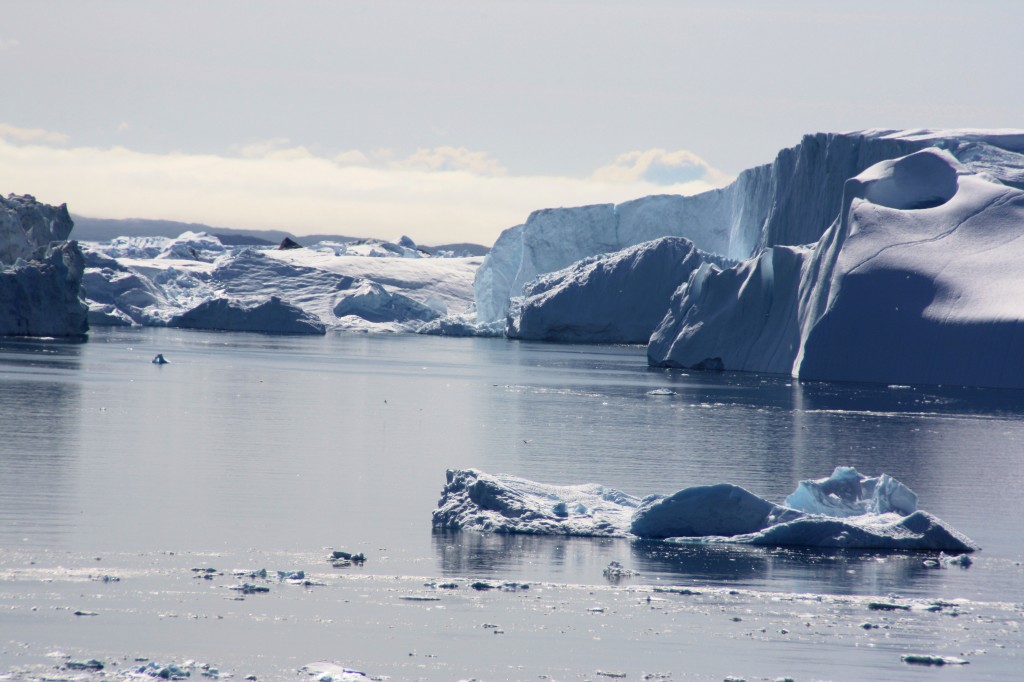
Too beautiful to “waste”? The team even found plastic waste in Greenland’s Ice Fjord (Pic: I. Quaile, Ilulissat)
Plastic waste tends to disintegrate into small pieces, just one or two centimeters in size, if they float in the sea for any length of time.
Somehow, the results of this study did not really surprise me. That, I think, is a very sad state of affairs. There have been so many reports of plastic particles being found in animals and birds and so in our human food chain that there is a danger we take this serious form of pollution for granted. The ngo Ocean Care estimates that around nine million tons of plastic waste finds its way into the oceans every year.
The seabed as a waste dump?
The AWI scientists say this is actually the first study to show that plastic waste is floating around on the surface of Arctic waters. For an earlier study, the German biologist searched for plastic, glass and other waste on photos taken of the Arctic seabed. She found that even in deep sea areas, the amount of garbage has increased in recent years. The concentration is 10 to 100 times higher than on the surface. The experts deduce from this that garbage ultimately sinks to the bottom and collects there.

Plastic bag at the HAUSGARTEN, the deepsea observatory of the Alfred Wegener Institute in the Fram Strait. This image was taken by the OFOS camera system in a depth of 2500 m. Photo: Alfred-Wegener-Institut/Melanie Bergmann/OFOS
The question is: how does this waste get up into the Arctic? It could, it seems be part of what, is described as a “garbage patch”, created when plastic waste gets caught up in ocean currents and concentrated into a kind of whirlpool.
Scientists have already identified five of these patches around the globe. The waste in the Arctic appears to be part of a new, sixth “patch” developing in the Barents Sea. What a depressing development! Scientist Melanie Bergman thinks it probably contains waste from the densely populated coastal regions of northern Europe.
“It is thinkable, that some of this garbage drifts north and northwest, as far as the Fram Strait”, she says. Another theory, she says, it that the garbage being found in the Arctic is caused by the retreat of sea ice.
“More and more fish trawlers are following cod further north. Presumably, rubbish from the ships ends up in Arctic waters, either deliberately or by accident. We are assuming that this trend will continue”, says Bergmann.
Climate change and pollution threat
So while here in Bonn, just across the road from my office, the UN climate secretariat is struggling to come up with a draft text for the Paris COP21 summit, which will be acceptable to all parties (and so subject to so many compromises and loopholes?), we have yet another sign of a climate change impact on the no-longer-pristine Arctic. And at the same time, it indicates the effects our unsustainable lifestyles are having on the environment of the planet. I have been witness to many arguments over whether governments should put more effort into combating climate change or environmental degradation and pollution. Ultimately, once more I come to the conclusion that it is virtually impossible to separate the two.
Last week I interviewed two experts on different aspects of ocean protection for a Living Planet special: Oceans under Pressure. They expressed similar views on the intrinsic connections between climate change, humans’ maltreatment of the environment and the health of the oceans on which we rely for survival. Not only are we causing climate change. The other pressures we put on the oceans make it less able to cope.
Tony Long is in charge of work against illegal fishing with Pew Charitable Trusts:
“I think climate change, over-fishing and illegal fishing are all linked in one way or another. The bad practices that occur from illegal fishing can damage the ecosystem, whether it be trawling and ripping up corals, or fishing the wrong species at the wrong time. It all has an effect on the broader ecosystem. And with ocean acidification and the changes that are taking place now scientifically proven, that’s going to reduce the amount of fish people can catch, if we don’t start to look after it. So actually it should all be seen as one”. (Read the interview here).
Ove Hoegh-Guldberg is Director of the Global Change Institute at the University of Queensland, Australian, and chief scientist with the XL Catlin Seaview Survey, which has been monitoring the state of the world’s coral reefs, including the current global bleaching event:
“On our current track where we’re polluting local water, we’re overfishing coral reefs and now we’re rapidly changing the temperature and acidity of the ocean, we won’t have coral reefs and it will be a very long time before they come back – probably well after our exit from the climate. We are the first generation to see these types of impact and we are going to be the last that has the chance to do something. We must get to very low CO2 emission rates as soon as possible, hopefully over the next 20 to 30 years. Because if we don’t – it won’t just be coral reefs. It will be a large number of other ecosystems that go, and humanity will be in trouble.” (Read the interview here.)
I rest my case.
Ice melt to motivate whizzkids?
And understanding that ice cores can tell us about 800,000 years of climate history tends to fascinate even the most unscientific of youngsters.
Not that the 160 young folk assembled recently in Bonn by the Hans-Riegel Foundation were lacking in scientific interest or talent.
The foundation, set up by the highly successful businessman who created HARIBO, (comes from HAnsRIegelBOnn, by the way) the “gummy bear” brand name, supports innovative educational projects with a view to encouraging talented young people to go into research. It awards prizes to school pupils in Germany and Austria for scientific projects.
Recently, 160 prizewinners were invited to a “Science Slam” in Bonn and a series of workshops and presentations – including a talk by renowned climate expert Mojib Latif. Mojib Latif is a professor for oceanology and climate dynamics at GEOMAR, the Helmholtz Centre for Ocean Research in Kiel, in northern Germany.
He has just been chosen as one of two winners of this year’s Deutscher Umweltpreis or German Environment Prize by the “Deutsche Bundesstiftung Umwelt”, one of Europe’s largest foundations. It’s the first time the award has been given to a climate scientist.
Latif, whose family background is Indian, is a well-known face on television. He has a talent for explaining complex climate phenomena in a way that ordinary people with no scientific background can grasp. As I listened to him addressing the young scientists, I could see how they were spellbound by his stories and anecdotes. And that makes it easier to digest the diagrams and figures that illustrate the workings of the global climate.
Latif holds his audience’s attention with a mixture of humour and examples from everyday life. He anticipates questions of the “skeptical” type, explaining the existence of natural trends and variations as well as human-made warming, and the wide range of scenarious covered by climate models.
When he turned to Greenland and to the Antarctic, I could see the fascination and curiosity in the eyes of the young audience.
The main message of this expert’s message was a mixture of concern at the rate of climate change and optimism that we have the technology to replace fossil fuels by renewables – and that the up-and-coming generation will use it to avert the worst.
Although he’s fairly certain we won’t be able to keep to the two-degree target, Latif says humankind just cannot be “so stupid” as to keep burning fossil fuels and heating up the atmosphere. If the applause of those representatives of the younger generation could be translated into positive action to combat climate change, his optimism may well be justified.
You can read what he told me in an interview after the encounter with Germany’s science whizzkids here:
“People power”, Shell and the Arctic
This week’s announcement that Shell is abandoning its controversial Arctic oil exploration for the “foreseeable future” provoked a wide spectrum of reactions – from disappointment, especially amongst politicians in Alaska, to the rejoicing of the environment campaigners.
Shell cites disappointing results, high operating costs – and an “unpredictable” regulatory environment as the reasons for the change in policy. The latter is the interesting one. Behind it lies an unmentioned but tangible ongoing shift in politics and society.
The tightening up of environment regulations in the USA is but one sign of the growing awareness that resources are limited, fossil fuels are harming the climate, and growth at the cost of environmental destruction is no longer acceptable.
Campaign success
Environment campaigners have run a highly visible and successful campaign drawing attention to the risks of oil drilling for one of the world’s last remaining pristine regions, which is also one of the most dangerous because of low temperature, ice and poor visibility.
Greenpeace has been campaigning online and around the globe to stop Arctic oil drilling. This summer, kayakers staged spectacular protests in Seattle against Shell’s Arctic drilling plans.
Critics have succeeded in increasing awareness of the paradox behind the increasing accessibility of the Arctic to oil and gas exploration. Warming through increased CO2 emissions from the burning of fossil fuels is melting the Arctic ice. Exploiting that harm humankind has done to the environment with a view to extracting more oil -which in turn would cause further damage to the climate and the planet we live on – is cynical at best, self-destructive at worst.
Reputation at stake
All this is harmful to the image of Royal Dutch Shell. The Guardian quotes Greenpeace Arctic campaigner Ben Ayliffe:
“It is undeniable that the protests were a factor in Shell’s decision because the Arctic had become a defining environmental story”.
The paper quotes “company sources” as accepting that Arctic oil damaged the firm. “We were acutely aware of the reputational element to this programme”.
Shell had invested around seven billion US dollars in its Alaskan operations. But investors are worried about whether the company’s business models can hold against international climate protection goals.
Not the last word
The decision does not mean Shell will stay out of the region for good. Nor is it the end of oil exploration in the Arctic in general. BP’s Prudhoe Bay field and Gazprom’s Prirazlomnoye platform in the Pechora Sea – the object of the spectacular Greenpeace protests and Russian seizure of the organization’s boat and crew in 2013 – remain.
Nevertheless, Shell’s decision has to be a milestone in the ongoing struggle to protect the environment and halt climate change through a switch to renewable energies. Greenpeace International Executive Director Kumi Naidoo told journalists:
“It’s time to make the Arctic ocean off limits to all oil companies. This may be the best chance we get to create permanent protection for the Arctic and make the switch to renewable energy instead. If we are serious about dealing with climate change we will need to completely change our current way of thinking. Drilling in the melting Arctic is not compatible with this shift.”
This week I interviewed German climate expert Mojib Latif, who is being awarded a key European Environment prize for his tireless efforts to inform people about the risks of climate warming and the need to decarbonize the economy. His key message was that we have the technology to make a real difference. But it will only work if people take that to heart and don’t leave it up to the politicians, he says.
Shell’s departure from Alaska shows what “people power” can do.
Can we still avert irreversible ice sheet melt?
Earlier this week, I was able to follow up my last talk with Professor Stefan Rahmstorf from the Potsdam Institute for Climate Impact Research (PIK), after he returned from the Paris climate science forum. After the publication of the study he was involved in on paleoclimatic data linking global temperature with sea level rise, and having heard his views on the science consensus ahead of the December UN summit in Paris, I wanted to know how he views the prospects for the polar ice sheets.
A question I return to often is whether anything we do to reduce emissions from now onwards – given that huge damage has already been done by our fossil fuel emissions and that the CO2 will remain in the atmosphere for a very long time to come – can prevent the ice sheets in the Antarctic and Greenland from reaching a “tipping point”.
Professor Rahmstorf gives this definition of a “tipping point” – which can mean different things to different people in different contexts:
“Climate tipping points are points of no return, where you cannot stop a process that has been set in motion. It’s a bit analogous to the situation where you are sitting in a rowing boat and you lean over a bit to one aside and not much happens. Then you lean a bit more and a tipping point comes where the boat simply tips over. One of these points of no return is with our continental ice sheets, where their further melt-down becomes inevitable and unstoppable. And we have to realize that we have enough continental ice on this planet to raise global sea level by more than 60 metres. That means we cannot afford to lose even a very small fraction of that ice without drowning coastal cities and small island nations.”
Is the boat still afloat?
But, of course, we are already losing ice at a worrying rate. Rahmstorf cites recent research showing that at least a part of the West Antarctic ice sheet has already been destabilized.
“We probably have already crossed the tipping point for a part of West Antarctica. That is probably going to already commit us to about three metres of sea level rise.”
Of course this is not likely to happen in the very near future. But the problem with the tipping points is, of course, that there is no going back, as Rahmstorf explains:
“Sea level has already risen 20 centimetres globally since the late 19th century, due to modern global warming, which is very basic physics. It’s melting continental ice sheets. And also the oceans are being heated up, which expands the ocean water, because warm water takes up more space. And by the year 2100, with unmitigated emissions, we are looking at one meter of sea level rise, which already, for vulnerable coastal areas like delta regions, like Bangladesh for example, will dramatically increase the storm surge risk. But sea level rise will not stop in the year 2100, because the ice sheets are actually quite slow to melt, and within the next decades, we will be causing a long-term sea level rise commitment by several metres for every degree of global warming that we cause.”
Greenland – and Miami, St. Petersburg, Bangladesh…
Record melting appears to be happening on Greenland at the moment. I asked Rahmstorf how safe the world’s biggest island and the largest area of freshwater ice in the northern hemisphere (See also the Ice Island in Pictures) is from reaching a point of no return. He wasn’t able to give a reassuring answer:
“We don’t know exactly where the tipping point is for the Greenland ice shield is. The IPPC estimates anywhere between one and four degrees of global warming. We are already at one degree warming, so we may well cross that tipping point in the next decades.
In the review of the relation between global temperature and sea level rise from polar ice disintegration I discussed in the last blog post, Rahmstorf and his colleagues found that just a slight further rise in temperature might equate to a rise in global sea level of up to six metres. I asked him what that would mean for the world right now:
“There would be quite a number of large coastal cities I cannot imagine could still be defended. Think of New York city for example. Or Miami would be one of the first cities to go. St. Petersburg, Alexandria, Manila – you name them. Once you are talking about metres of sea-level rise, the consequences would be quite catastrophic. Especially as it is to be feared that people will not react proactively by move away from the danger zone, but will probably stay in their cities until a major storm surge hits. Like Hurricane Katrina hitting New Orleans, which also was a case where experts had warned for a long time that the city was in danger, once the next hurricane strikes, but people still didn’t act according to the precautionary principle. As they should have, and as we must do to prevent a climatic disaster in future.”
Can we keep the ice chilled?
So what would we have to do to keep sea level in check?
“Emissions would have to be close to zero by mid-century, so we are not talking about small cosmetic adjustments, but a transformation of our energy system, decarbonization, that is getting out of the carbon-based energy system. The good news is that the technologies to do that are available. It’s all about mustering the political will. And, of course, fighting the particular interests which are opposing this transformation.”
Stefen Rahmstorf is not one of those scientists who prefer to sit on the fence and leave the interpretation of his research and their implications up to the politicians. He is convinced only rapid action to stop emissions can prevent catastrophic climate change – including the melt of the polar ice.
I have interviewed him on previous occasions in the last few years. This time, I was surprised by his optimistic stance on whether the international community can still do anything in time to stop global warming from reaching the dangerous level of two degrees (or even one point five, as Rahmstorf and others say would be far preferable):
“There’s still a good chance that a strong agreement coming out of the Paris summit in December could mean we could avoid the Greenland tipping point. I am cautiously optimistic that Paris will reach a meaningful agreement, not necessarily one that guarantees that we will stay below two degrees global warming, but one that will be seen in hindsight as a real turning point, from where emissions started to fall soon after. The key point is – the sooner we stop global warming, the better the chances are that we avoid future critical tipping points.”
All we need, says Rahmstorf, is the political will to make use of the technologies available, take on the fossil fuels lobby, and clean up our energy system.
Listen to my interview with Stefan Rahmstorf on DW’s Living Planet this week.



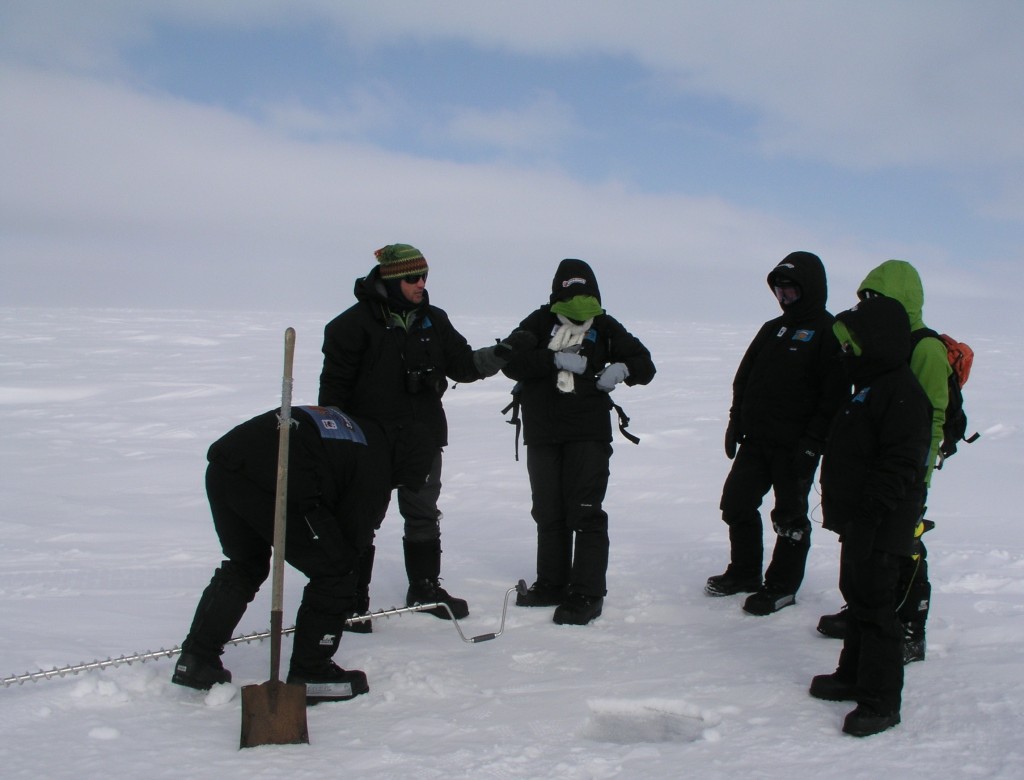

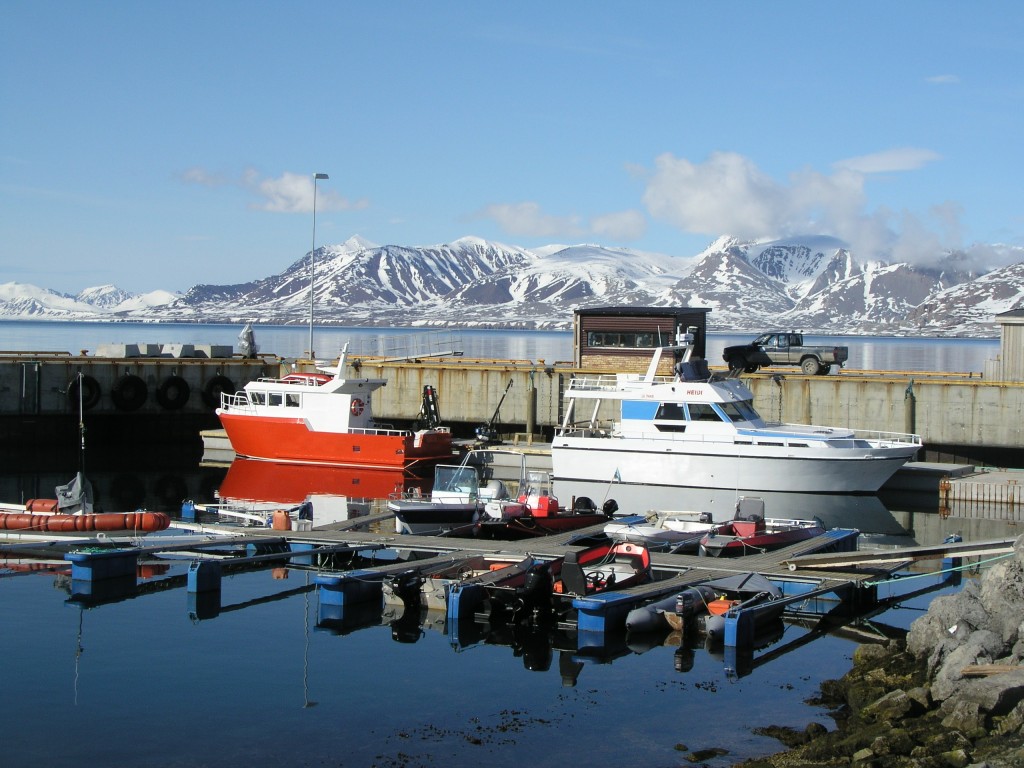




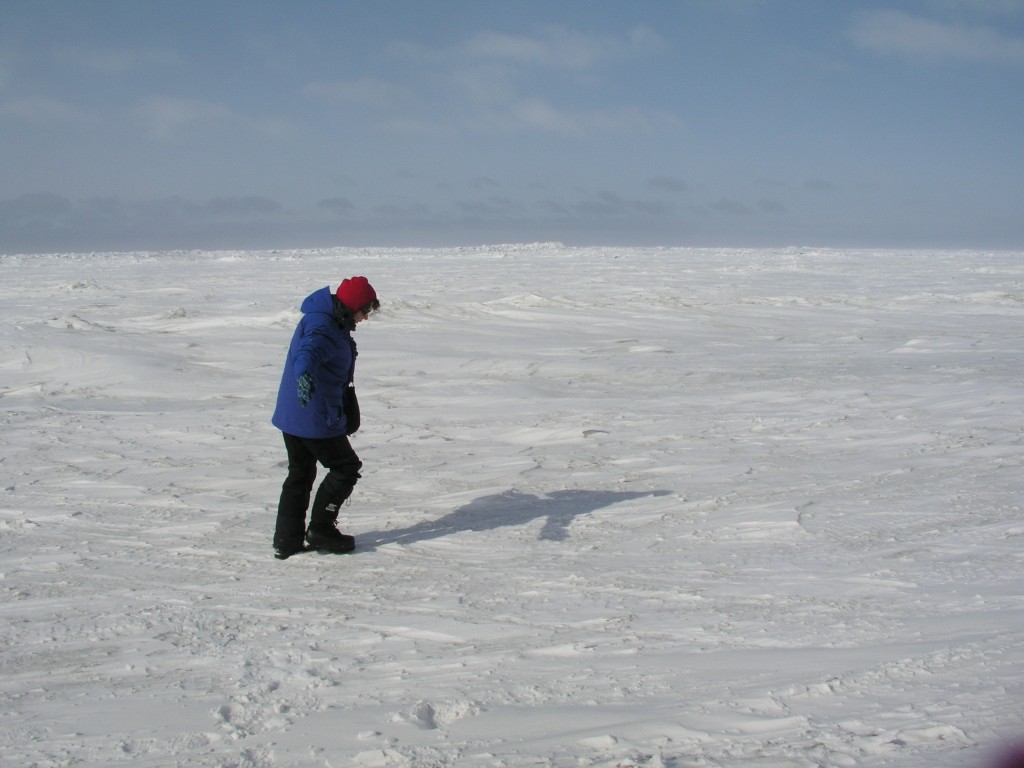

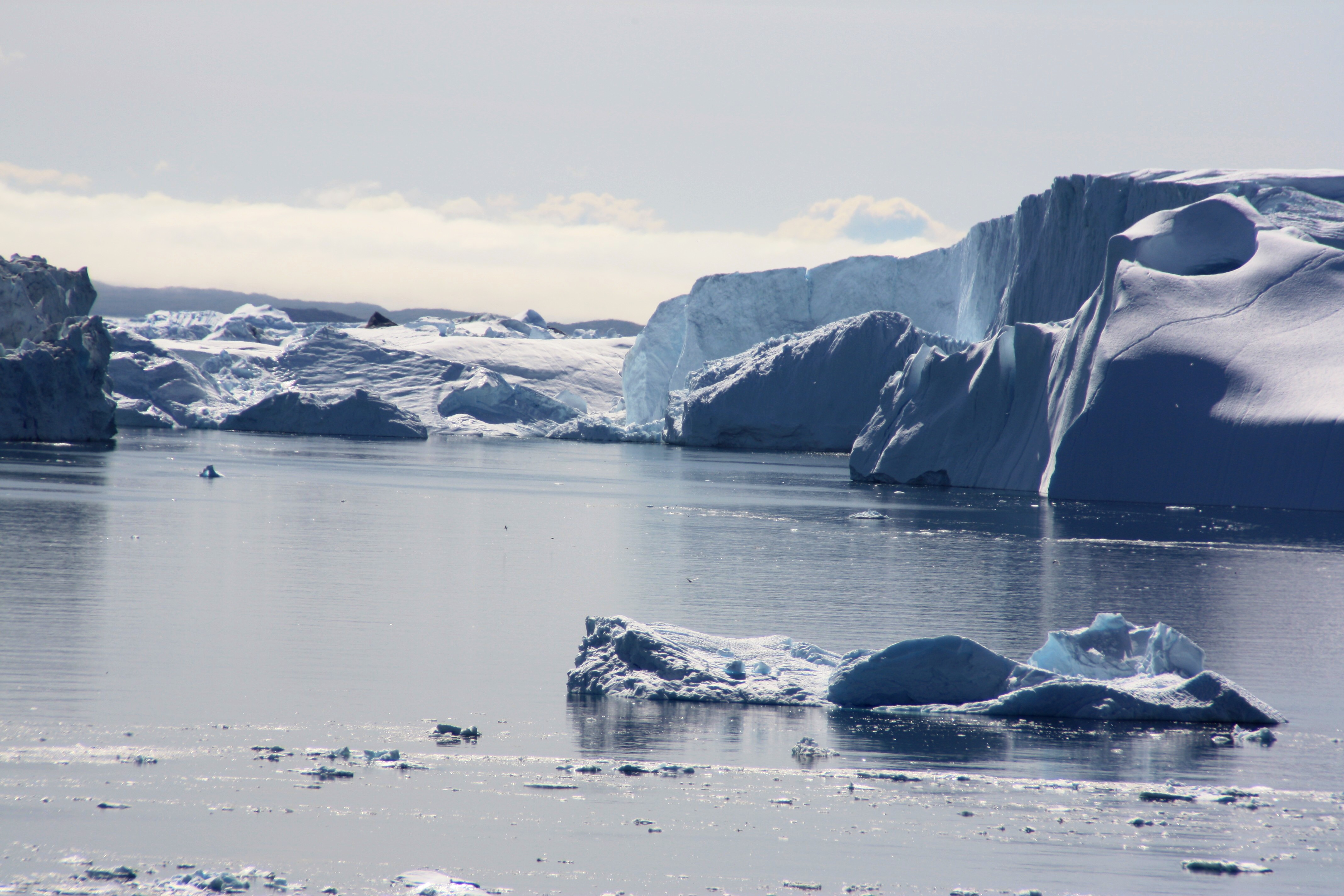
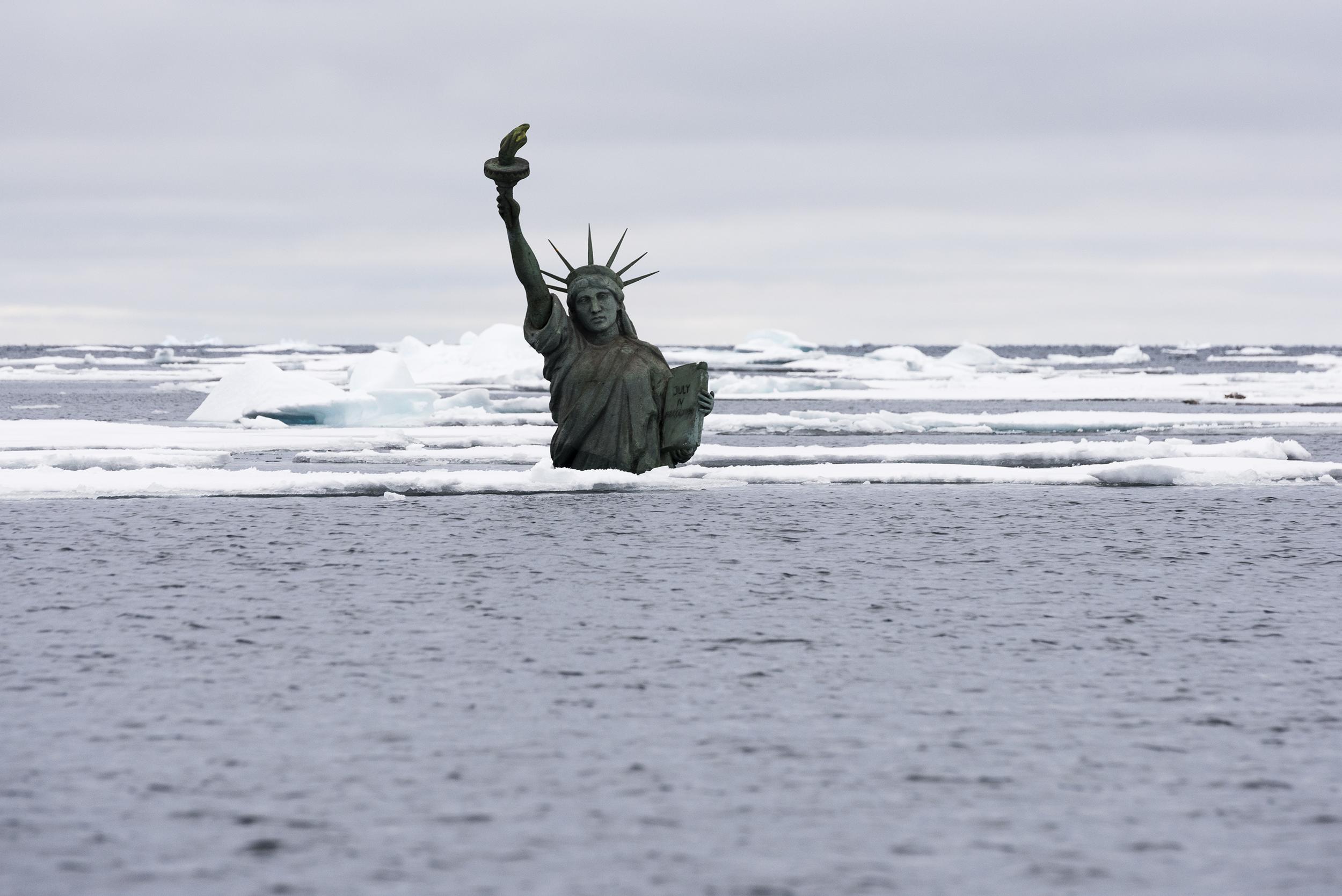
















Feedback